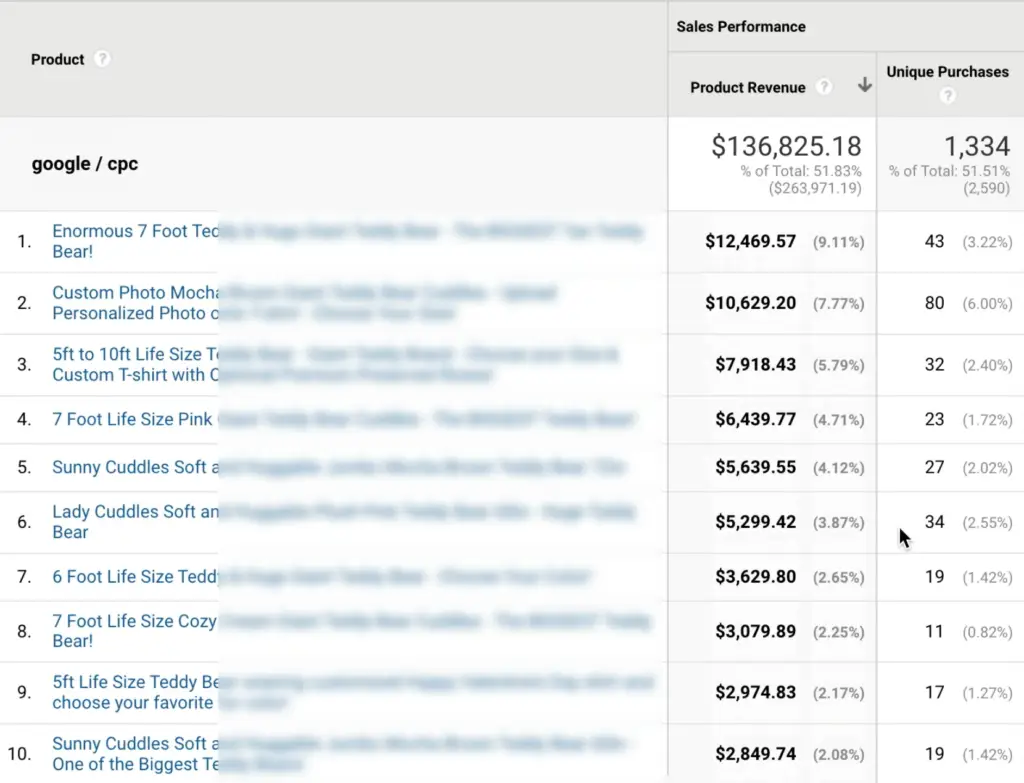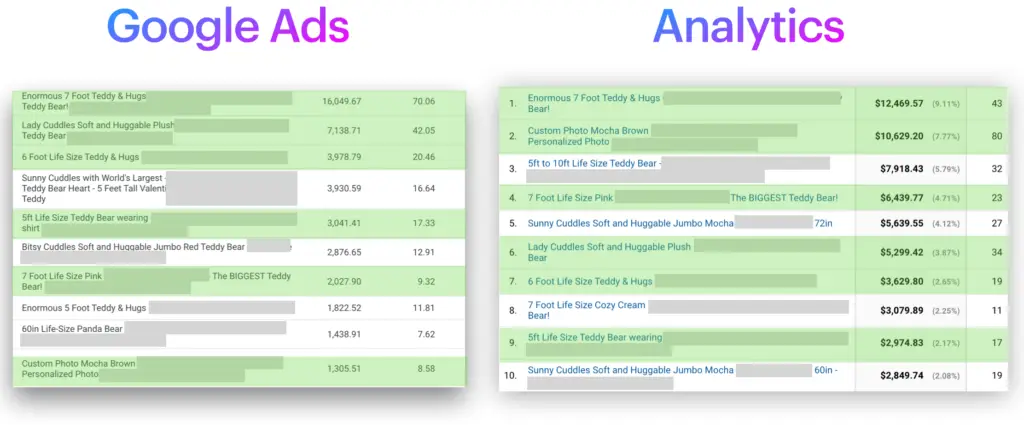One of the optimization strategies of Google shopping campaigns is to split them into the best-selling products and others. But how do you find the best-selling products? This can be done in two ways: with Google Ads, and with Google Analytics. We will explain both methods, and compare them here.
Google Ads method

- In Google Ads, we set the desired data range, for example, last month.
- We then click on reports, predefined reports, and shopping item id.
- Then, we add the product attributes needed for finding the bestselling products: Product title, Conversions, and Conversion value.
- These are the bestselling products according to Google Ads
Google Analytics Method

- In Google Analytics, we click on the Conversions menu, e-commerce, and product performance.
- We then click on segments, deselect all users, and add instead google / cpc. This way, we have filtered the data to see only Google Ads traffic.
- After selecting the correct date range, we can view our best-selling products.
Comparison and Recommendation

Now let’s compare the results. Upon closer inspection, we see that only seven out of ten products match.
Why such a difference, and which list reflects the bestselling products correctly?
To understand this, let’s consider how a sale is attributed in each of the channels.

In this scenario, a visitor clicks on the shirt product ad, opens the shirt page, browses to the t-shirt and pants page, and finally purchases pants.
Here is where the difference starts.
Google Ads will attribute the sale to the first ad click – the shirt, while Analytics will attribute the sale to the pants.
In the Google Ads report, the number against each product line reflects the value of all products sold after this product ad was clicked – not the value of this product sales.
In the Analytics report, the number in the product line correctly reflects the value of this product’s sales.

That’s why I recommend using the Analytics report when building the Google Ads bestseller campaign.


